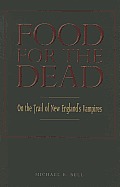New England Vampires at S.H.E.A.R.
 One of last year’s highlights was the annual conference of the Society for Historians of the Early American Republic, conveniently in Cambridge.
One of last year’s highlights was the annual conference of the Society for Historians of the Early American Republic, conveniently in Cambridge.
At that meeting the panel I enjoyed the most was one I didn’t highlight back here because its Revolutionary roots weren’t then apparent to me: “Staking Your Life on It: Vampirism, Healing, and Consumption in the Early National Era.”
That session, organized by panelist Mary Fuhrer and moderator Joanne Pope Melish, offered the advantage of looking at a well defined topic from four different angles.
Fuhrer, who studies the dynamics of New England communities, spoke on “Consumption’s Vampire Grasp.” In the early republic tuberculosis caused 20-33% of adult deaths in New England, sweeping through families and frightening towns because of the region’s dense settlements. That made people desperate for a remedy, however far-fetched.
The next panelist was Brian D. Carroll, who emphasizes the transnational approach to history. His thesis, which I highlighted in 2015 tracks a belief in the “chewing dead”—corpses that chewed their burial shrouds and might also sap life from living relatives—from folk belief to Enlightenment medical writing, then from Hessian military physicians to prisoner-of-war settlements in Connecticut.
Nick Bellantoni, Connecticut state archeologist emeritus, then described the first archeological evidence for the New England practice, as opposed to the scores of documentary descriptions (usually critical). His study of a skeleton exhumed and rearranged a few years after death in Griswold, Connecticut, made the news shortly after the conference when D.N.A. evidence confirmed a guess about the man’s identity.
Finally, folklore scholar Michael Bell commented on the three papers. In Food for the Dead: On the Trail of New England’s Vampires, Bell was the first to pull together the evidence of the exhumation practice in New England. By now he’s counted 72 documented exhumations, 53 of which involve burning the corpse and 19 eating or breathing some remnant of it.
One major theme of the discussion is that looking back on the cultural phenomenon through the lens of “vampires” and the twentieth-century understanding of that myth might distort what we’re seeing. Although that term was known in America before the Revolution, people didn’t apply it to this worry about consumptive corpses until after the practice of emergency exhumation was nearly over.
A point of discussion and, it appeared, disagreement was how much of the exhumation practice in New England derived from Enlightenment medicine (top down) and how much from folklore (bottom up). I’ll share evidence from both sides this weekend.
TOMORROW: Sources from the 1700s.

No comments:
Post a Comment